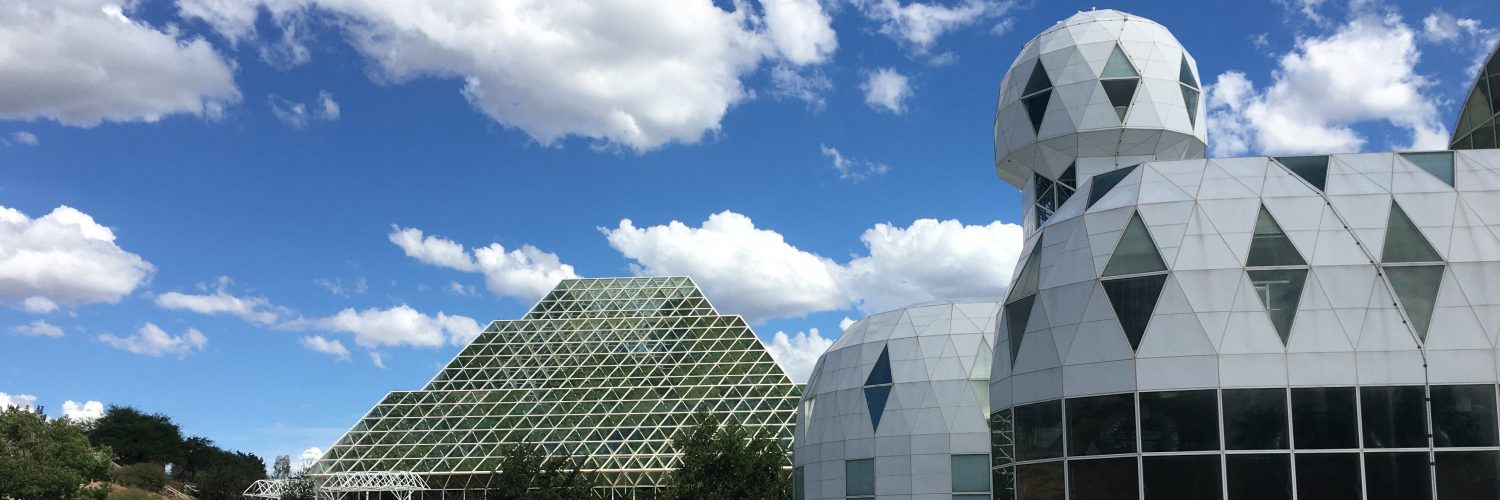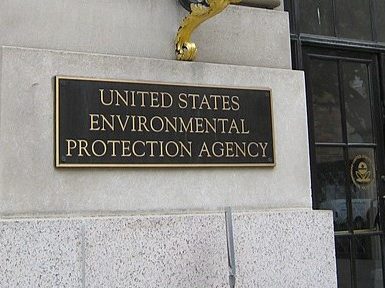
Dr. Joaquín Ruiz is a professor of geosciences at the University of Arizona, endowed by the Thomas R. Brown Foundations. He also serves as vice president of Global Environmental Futures and director of Biosphere 2, a project of UArizona. Last, but not least, Ruiz serves as co-chair of the Mining Committee at the Arizona-Mexico Commission.
From day to day, Ruiz manages Biosphere 2 and its many unique, powerful environmental experiments, and he also spends a lot of time educating both his students and the public about the environment, especially as it pertains to food growth, water usage and mining.
Chamber Business News spoke with Ruiz about his work and his recent time as a board member of the Arizona-Mexico Commission. Read the full interview below.
Question: What do you do in your day-to-day work?
Answer: Managing Biosphere is one; but finding connections between the powerful environmental programs of the U of A with international partners — or national partners — I spend a lot of time doing that.
Q: Can you tell me more about Biosphere 2?
A: If you think about Biosphere 2, it has four components.
The first component [of the Biosphere] is the experiments that go inside the glass.
Right now, for example, we have an experiment on the fate of rainforests as they dry up, because as global climate change progresses, we worry that many of the big rainforests are going to be drying out; there’s going to be less rain.
The second [experiment] is: How do we protect corals? Again, as the temperature of the ocean warms up and the waters become more acidic, many corals are dying, and our interest is that corals are fundamental for the well-being of a lot of people in the world — either for tourism or because of fisheries.
The third [experiment] is: We have a big program in the fate of water in the Southwest as, again, climate changes. And, of course, our vegetation is going to change because of that, so the mass balance of water is going to be very different. So, there are huge experiments that cannot be done anywhere else.
The second part of the Biosphere is: We get about 100,000 tourists that show up every year, and we want to educate them about the environment.
The third part of the Biosphere is: We have a conference center in there, which we’re trying to develop into something like the Aspen Institute of the Environment; not with Aspen, but that kind of concept.
And the fourth [part of the Biosphere] is that it’s an icon that we can then use to connect these partnerships.
I have three partnerships that are being worked on extensively right now. One of them is: ‘How do we make Mexico City more sustainable?’ We have a huge project with Mexico City, and we chose Mexico City because the partnerships we have there are great. And if we get Mexico City to be more sustainable, then we’ve done something at scale that can be then introduced to other big cities, like São Paulo, [Brazil], or Lagos, [Nigeria].
The second project that we have is a binational partnership — again with Mexico — to study the effects of climate change in semiarid environments, broadly speaking. So, we have groups between Mexican institutions and U of A institutions trying to understand a variety of issues that come from those changes in the desert, including mining, which is an important part of it.
We have a project that we’re developing, supported by the Jewish National Fund, creating a binational institute between the U of A — through the Biosphere — and a region in Israel called the Arabah, which is in southern Israel, in a region called the Negev Desert, which is one of the driest deserts [in the world].
And these folks have amazing water technology [in Israel]. They basically grow food in rocks with salty water; it’s just the most incredible thing. That’s a partnership we’re developing. And we have other things that we can offer to them, like growing mushrooms and other stuff that they don’t have, so it’s a great partnership. And, of course, education is in the middle of it, with students coming and going.
Q: When did you first get involved with the Arizona-Mexico Commission, and in what capacity?
A: I’ve gone to a variety of meetings, but then I was added to the board I’d say about four years ago. I’m now a board member of the Arizona-Mexico Commission, and I’m also the co-chair of the Mining Committee of the Arizona-Mexico Commission.
Q: What do you do with the Mining Committee?
A: What we’re always trying to find is ways to look for what makes us special in mining and how we can leverage that to create programs in which more mining companies would come in — or the industry that supports mining companies, like Komatsu or Caterpillar.
How do you approach all of the industry that surrounds mining, including making sure that mining is sustainable — which is a big deal now — and responsible? It’s always been responsible, but it’s basically more sustainable. And how do you do all that?
The mining industry is more and more interested in sustainable operations, not only because it’s good for the bottom line, but because it’s good for the environment and the people that work in mining. I’m spending a lot of time thinking about those kinds of things.
Q: How do you feel your unique expertise in environmental science and geology help the Arizona-Mexico Commission accomplish its goals in the mining sector?
A: One of them is simply personal. I was born in Mexico City, and I got my first degree there, and I know a lot of people — including people from the mining sector in Mexico — very, very well. So, the personal touch is important.
Secondly, I’m a geologist, so I’ve been working as a professor with many of my students doing research in ore deposits — in Mexico, in particular; in other parts of the world, too.
So, I understand the needs of the mining industry very well. I can speak the language, and there’s [the] trust and the connectivity that the AMC really is all about; I think I fit the bill in all those categories.
Q: What would you say is one of your most notable memories during the time that you’ve been with the AMC?
A: The various meetings in which our governor and the governor of Sonora clearly have a joint vision for the region. I’ve been quite impressed by that.
I was also fortunate to be [on] the very first trip that [Gov. Doug Ducey] took to Mexico City, and the recognition of how important [it is to have] a common vision with our neighbor… it’s been terrific.
If it hadn’t been for the AMC and its leadership, which, of course, includes the governor, I think, with all the narrative in both countries about what’s going on — if it wasn’t for the AMC and the governor and the governor of Sonora, who knows what kind of pickle we would be in, really?
Q: How has your work with the Arizona-Mexico Commission, and your other cross-border work, shaped your view of the Arizona-Mexico relationship?
A: Most of my relationship [with Mexico] before I joined the AMC was academic. I’ve been a professor all my life, and even though I’ve been working with [the] mining industry, it’s been through science research projects. And the AMC has broadened my view about the importance of the business part of it, which then allows me to be more effective in what I’m trying to do in these connections.
Q: In your opinion, what is the value of that relationship and fostering collaboration between Arizona and Mexico?
A: We speak highly of the business that we do across our border, and we cannot forget that a very large part of that is actually mining. So, there are a couple of issues: one of them is truly the importance of mining to our economy — we tend to forget that; secondly, the issues that the mining companies have to address to be successful in their business — and more and more there are environmental issues that are part of it.
All those things that, before, I was only dimly aware of, I am fully aware of now. My connection with them in the past was simply helping [the mining industry] find more ore, but now my view of the industry is way more holistic, and [I’m aware of] all of the issues that they need to address, not only simply finding more ore.
Q: In what ways do you feel you’ve seen the AMC grow or expand its scope since you’ve been involved?
A: Even in those four years, I can see the AMC — from the beginning, when I got on, to now — it is a much more effective entity, with clear directions and committees and subcommittees, and you can see that specifically when you go to these AMC conventions. And, I think that every year that I’ve been to one of these, they’ve been better — they’ve been more focused…
They’ve come up with important issues; there’s follow-up on them. So, it’s a much more effective organization than when I started in it.
Q: Is there a recent achievement, project or event that you want to share?
A: I think the most important one would be — there’s a mining company in Mexico called Fresnillo. They’re the largest silver producer in the world, and they’re listed in the London Stock Exchange. They’ve become more and more interested in Arizona through the University of Arizona, and they are more and more interested in sustainable mining.
And that, I think, would not have happened without two things: one of them, some of the programs at the U of A; but secondly, without the interest of the AMC, and [the AMC] allowing me to use that to have conversations with this company.
This is an exact transcript, but minor changes have been made for clarity.
















Add comment